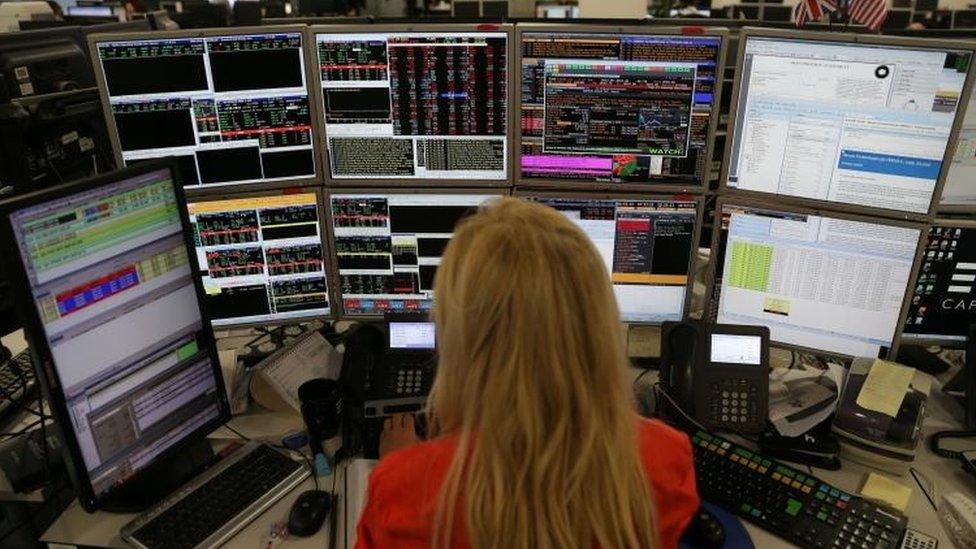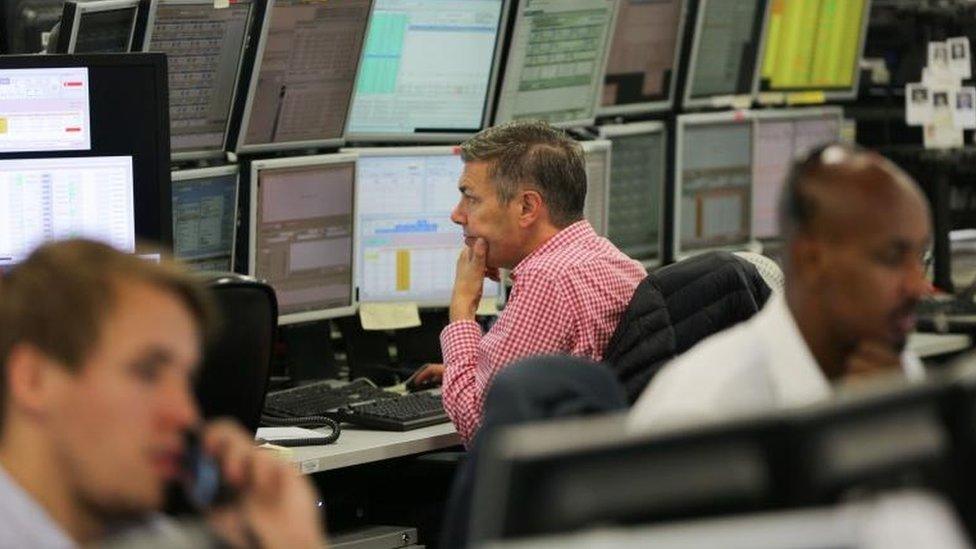Markets and the Brexit relief rally
- Published
- comments

Surely, by now, stock markets should be through the floor and sterling engaged in a gutsy grapple with the Zimbabwean dollar for the crown of least-liked currency on global markets?
It hasn't quite happened like that - despite some apocalyptic warnings before the referendum.
Today the FTSE 100 is up more than 2% and is now above its level for all of June save referendum day.
The FTSE 250 - a better barometer of British business health - is up nearly 2%, though still significantly lower than it was on referendum day, its highest for the year, when many market participants believed Remain would win on 23 June.
Government borrowing costs are falling.
And sterling has stabilised.
So, are investors now comfortable with the decision to leave the EU?
Crisis over, so to speak?
Many argue that would be a peculiar judgement to make.
Markets are built to discover prices, not to make political points.

The volatility in the markets in the run-up to the referendum and the fierce falls in its aftermath were clear signals of participants struggling to judge business and currency values given the uncertainty around the UK's economic future.
Also, that something markets thought was going to happen - a vote to remain in the EU - did not.
Hence a big sell-off and a significant decline in the value of sterling.
Big sell-offs present buying opportunities, and are therefore often followed by rises as investors look for bargains.
Bears are followed by bulls.
Exporting companies are also helped by a weaker currency as their products tend to become more competitive.
And for any businesses that earn revenues in dollars - such as some pharmaceutical and oil companies - a decline in sterling is positive for profits.
In uncertain times, price discovery can be a tricky business.
As UBS's Bill O'Neill said on referendum night, "markets are a discounting machine and they will overreact first, think later".
Well, they have now had time to think.
And many of the signals are rather better than some feared.
First, the market system has remained operational.
Mark Carney's statement early on Friday morning that the Bank of England stood ready to provide all necessary support maintained investor confidence that liquidity would not dry up.
Participants did not simply leave the field of play.

Second, as Samuel Tombs of Pantheon Economics told me, it has become clear that Britain is not heading for a "hard Brexit".
The invoking of Article 50 - which starts the two-year clock ticking on Britain's exit from the EU - may not happen for months.
And some big figures - like George Osborne, still of course the Chancellor of the Exchequer - have said that Britain should remain a member of the single market, an important point for many businesses that trade with the rest of the EU.
Yes, government borrowing costs are falling. But many argue that is down to a "flight to safety" - the purchasing of government debt - rather than a judgement on the future performance of the UK economy.
What the relief rally of the past two days is not telling us is that anything fundamental about the economics of Britain's decision to leave the EU has changed.
Consensus Digest, which brings together the economic judgements of the major forecasters, suggests that economic growth rates will fall over the rest of 2016 and 2017 as businesses delay investments.
We are yet to see much - if any - economic data about what has happened in the real world post the referendum.
Of course, that data - released over the next few months and years - may not be as poor as some predict.
Or it may be worse.
But, once we have some facts, we will at least be able to look through the gyrations of the markets and make a clearer judgement about the effects on the UK, European and global economies of the decision taken on 23 June.